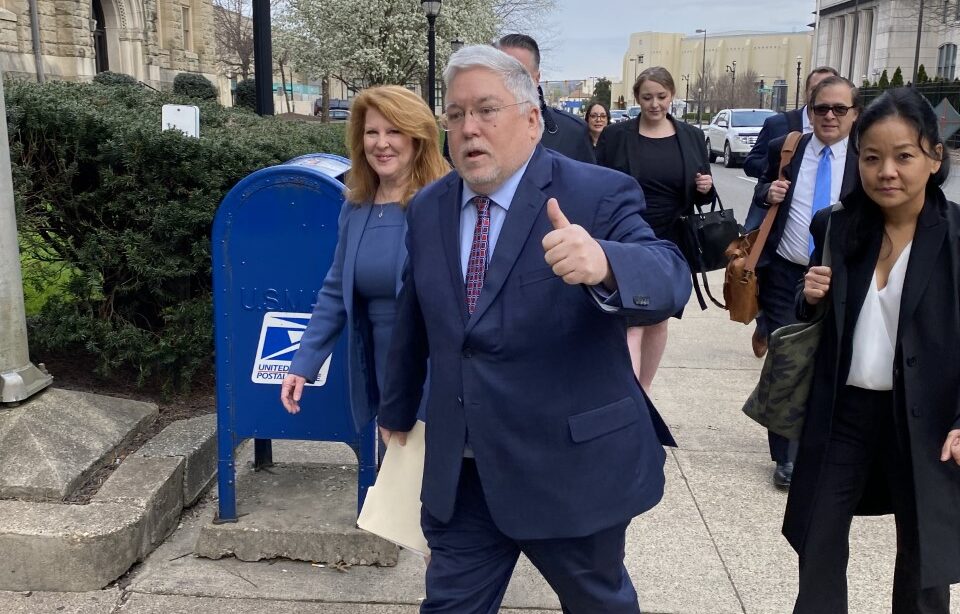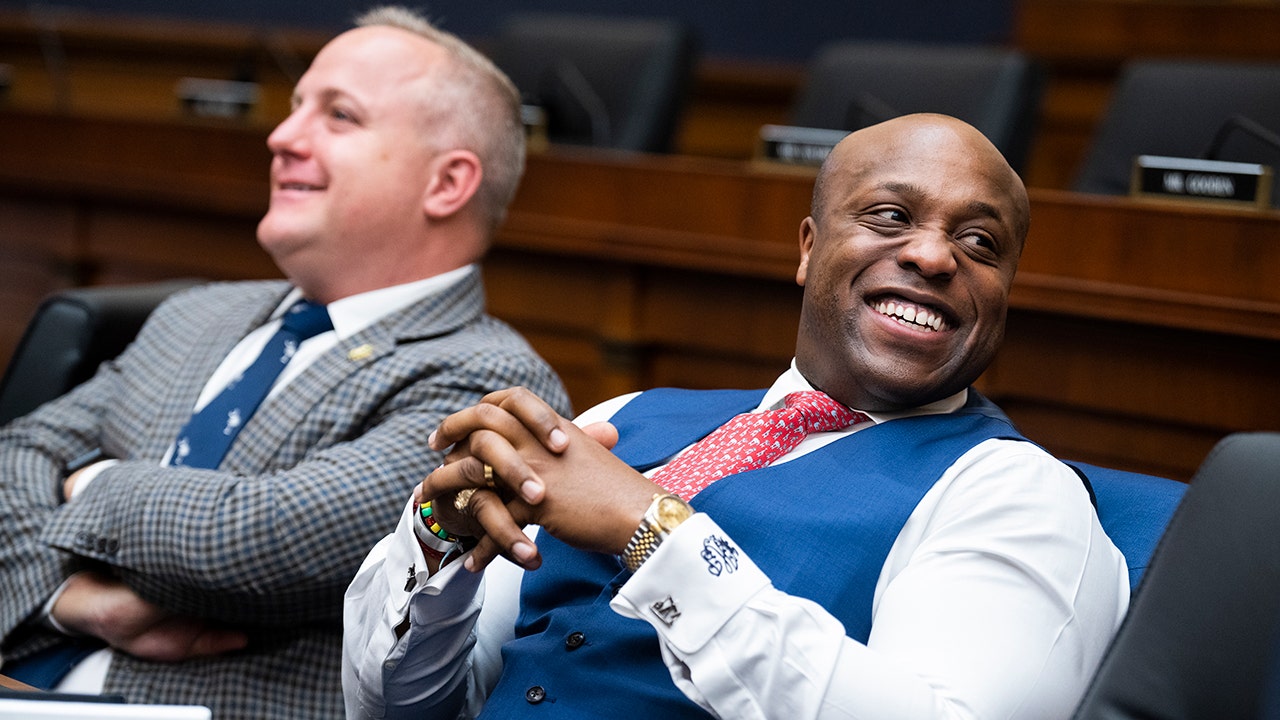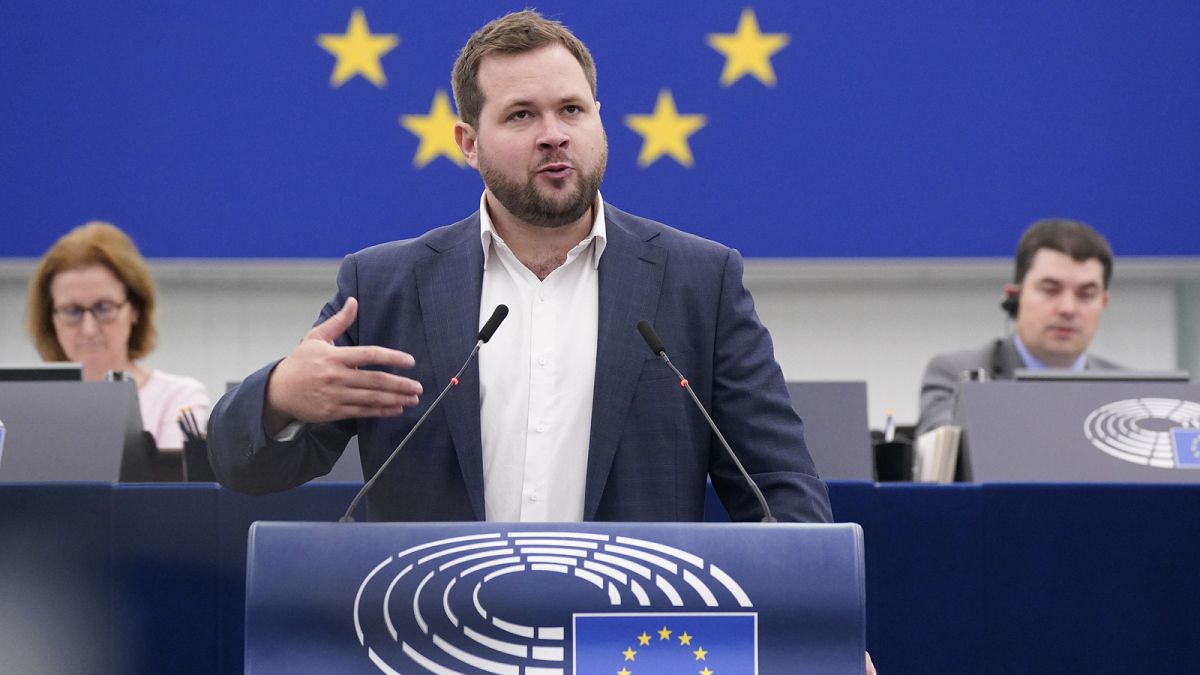Business
Google says it will reduce some user access to California news sites
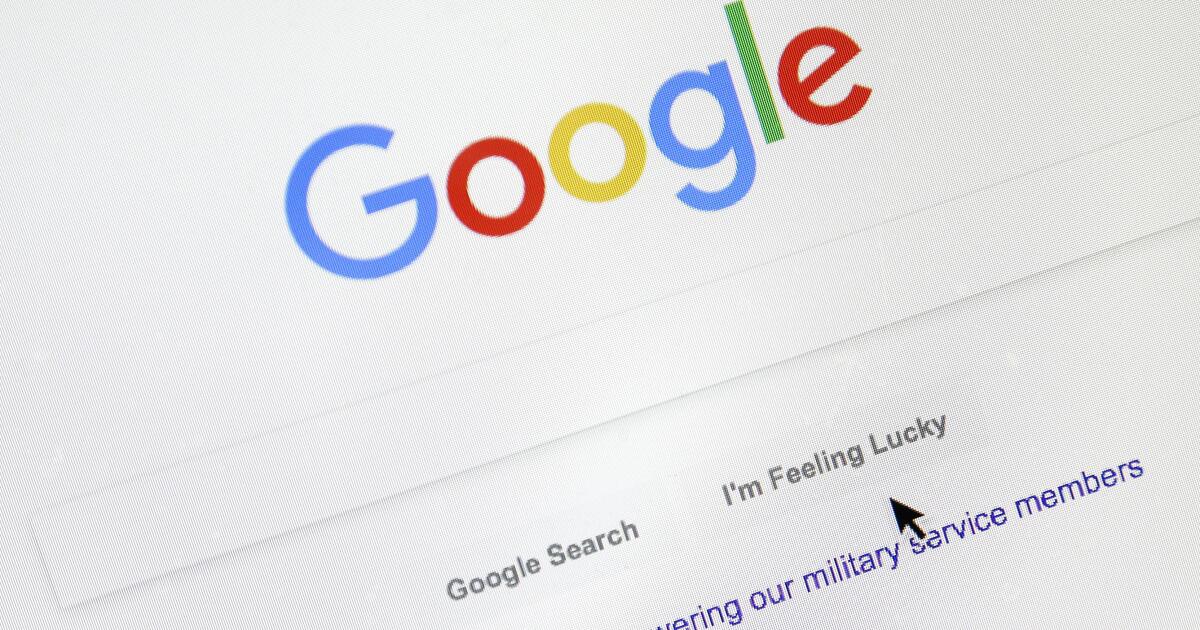
Google said Friday it would remove links to California news sites from its search results for some of its users, as it pushes back against a pending bill that would require the Silicon Valley technology company to pay publishers.
The search giant said the bill, called the California Journalism Preservation Act (CJPA), would upend its business model. The bill, if signed into law, would require companies including Google to fork over a “journalism usage fee” when they sell ads next to news content.
“We have long said that this is the wrong approach to supporting journalism,” wrote Jaffer Zaidi, vice president of Google’s Global News Partnerships, in a blog post on Friday. “If passed, CJPA may result in significant changes to the services we can offer Californians and the traffic we can provide to California publishers.”
Google also said it is “pausing further investments in the California news ecosystem.”
Many news outlets rely on sites like Google and Facebook to distribute its news, but they are at the whim of the companies’ algorithms.
Publishers, including the Los Angeles Times, have laid off staff in part due to revenue shortfalls blamed on the decline of print journalism and weak advertising dollars.
National news organizations such as the Washington Post and the Wall Street Journal also have laid off staff, as have primarily digital operations including BuzzFeed, Business Insider and Vice.
Local online outlet L.A. Taco, which recently put most of its staff on furlough, said one of the factors leading to its struggles include “Google’s A.I. that pulls information for its self-generated responses from news organizations without linking back.” It also cited changing audience habits as people gravitate toward watching influencer-style videos instead of reading articles.
“These two factors essentially destroyed journalism’s business model overnight,” wrote Javier Cabral, L.A. Taco’s editor.
The California Journalism Preservation Act is supported by the California News Publishers Assn. and the News/Media Alliance, of which The Times is a member.
The California News Publishers Assn. did not immediately respond to a request for comment.
Supporters of the California bill said it would help level the playing field for journalism outlets that have been struggling with gaining enough digital subscriptions to survive .
“Just to understand the difference in market dynamics, just consider that Google earns enough advertising revenue to pay for the [annual] cost of our newsroom in less than three hours,” said Chris Argentieri, president and chief operating officer of the Los Angeles Times at a hearing last year discussing the bill. “Google’s revenue for a month or two would cover the cost of all working journalists in California.
“Large digital platforms like Google and Meta use our content to generate billions of dollars in revenue and do not compensate us for it,” Argentieri said. “The size of the companies makes it impossible for us or anyone in our industry, for that matter, to have a seat at the table to resolve this issue through normal business channels.”
Critics of the bill, including Google, say that it would favor media conglomerates and hedge funds and put smaller outlets at a disadvantage.
The Mountain View, Calif.-based firm said it has partnered with more than 7,000 global news publishers through its Google News Initiative, including 6,000 journalists in California, but Zaidi said the company was pausing expansion of that initiative “until there’s clarity on California’s regulatory environment.”
The initiative has helped provide grants and training to journalists on digital tools. Just 2% of queries on Google search are news-related, Zaidi wrote.
“By helping people find news stories, we help publishers of all sizes grow their audiences at no cost to them,” Zaidi wrote. “CJPA would up-end that model.”

Business
Tesla to cut 601 jobs in Bay Area, a sign of more problems for EV maker
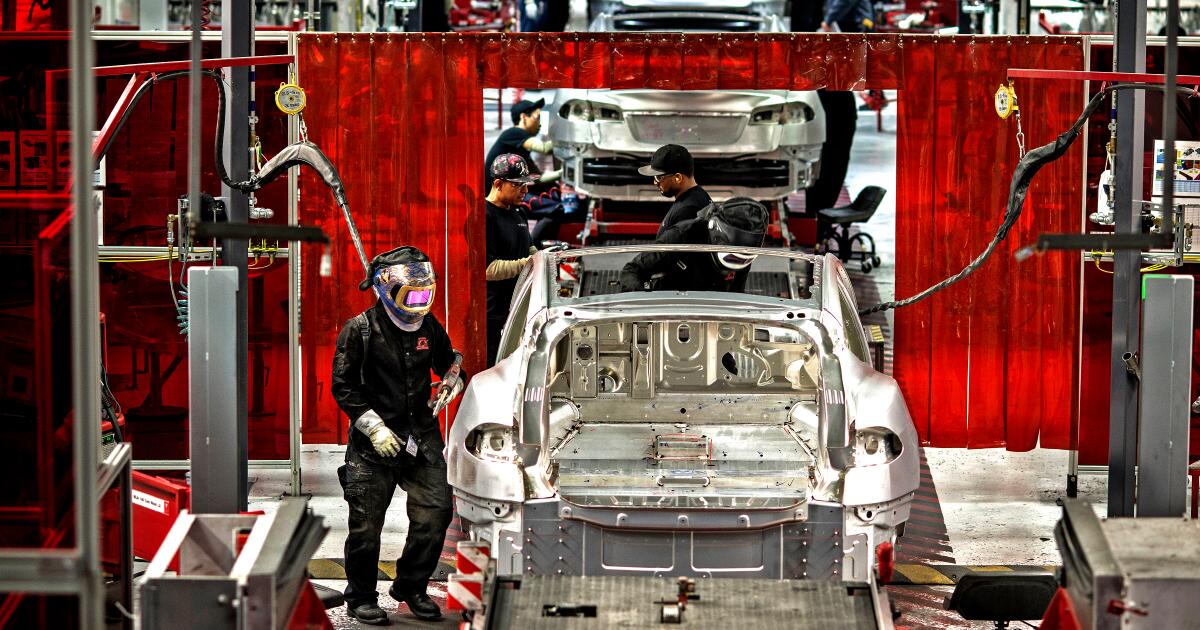
In the fourth straight week of layoff announcements, Tesla said it is now concentrating on reducing staff at its Bay Area facilities as part of a larger move to cut jobs globally.
State filings show that Tesla is planning to lay off 378 employees at its Fremont facilities and 233 at its Palo Alto offices.
The layoffs will occur over a 14-day period starting June 20.
An email to Tesla officials requesting comment was not immediately returned.
The layoffs come as the company struggles with flagging sales, top executives fleeing, a declining stock price and quality problems with the new Cybertruck. The low-cost Model 2 recently promised by Chief Executive Elon Musk also appears to be dead.
It is not immediately clear which positions are being cut. The San Francisco Chronicle reported they would include technicians, electricians, software engineers, plumbers and athletic trainers.
On April 15, Musk announced in an email to staff that Tesla was cutting more than 10% of its workforce, citing job overlap and the need to reduce costs.
A week later, Telsa said it was laying off 3,332 workers at its facilities and offices in Fremont, Palo Alto, Burbank and Lathrop.
Including the latest cuts, Telsa has announced 3,933 layoffs this year in California.
“As we prepare the company for our next phase of growth, it is extremely important to look at every aspect of the company for cost reductions and increasing productivity,” Musk wrote in the April email.
“As part of this effort, we have done a thorough review of the organization and made the difficult decision to reduce our headcount by more than 10% globally,” he continued. “There is nothing I hate more, but it must be done.”
Business
ChatGPT's new voice mode is giving 'Her' vibes

The days of an interactive, almost-human virtual assistant could be coming sooner than you think.
Tech company OpenAI has unveiled the latest update to ChatGPT, which now includes a voice mode that allows users to communicate more conversationally with the AI system. In a video posted Monday on X by OpenAI Chief Executive Sam Altman, company officials ask ChatGPT to tell them a bedtime story involving robots and romance.
“Ooh, a bedtime story about robots and love?” ChatGPT responds in a cheerful female voice. “I’ve got you covered!”
The system proceeds to tell a story about a curious robot “in a world not too different from ours,” and then pivots to different voices when company officials periodically interrupt to ask it to speak more dramatically, in a robot-like voice or in a sing-song way.
The new update, known as GPT-4o, quickly received comparisons to the 2013 Spike Jonze movie “Her,” starring Joaquin Phoenix, in which a lonely man falls in love with his virtual assistant Samantha, voiced by Scarlett Johansson. Even Altman appeared to refer back to the film, saying in a blog post that it “feels like AI from the movies; and it’s still a bit surprising to me that it’s real.”
(But that movie isn’t entirely rosy about AI taking on the role of a human companion, cautioned Wired Executive Editor Brian Barrett in a column titled “I Am Once Again Asking Our Tech Overlords to Watch the Whole Movie.” In the column, Barrett notes that at least one OpenAI employee heeded that advice. He quoted a tweet in which the employee said that re-watching “Her” “felt a lot like rewatching Contagion in Feb 2020.” )
“Getting to human-level response times and expressiveness turns out to be a big change,” Altman wrote.
Previous versions of ChatGPT were text-based, with users typing questions to the system and receiving written responses instantly. Past attempts to make the system give more human-like responses, beyond simple fact regurgitation or rudimentary stories, were largely rebuffed by ChatGPT.
Though bedtime tales about robots and love seem benign, AI and its potential effect on jobs is a pressure point in Hollywood and played a major role in last summer’s dual strikes led by the Writers Guild of America and the Screen Actors Guild-American Federation of Television and Radio Artists.
OpenAI, in particular, has not been shy about courting the entertainment industry and has met with studio and talent agency executives to discuss another of its products, Sora, an AI tool that uses text-based prompts and turns them into visuals that can be cinematic in quality.
Recently, indie pop artist Washed Out used Sora, which is not yet publicly available, to create a four-minute music video for the song “The Hardest Part.” The music video zooms through scenes from a couple’s life that are completely AI-generated.
Beyond Hollywood, other industries are also flirting with AI, such as fast food operators. Those businesses are now looking to AI to run drive-through orders or walk-up self-service kiosks to reduce the financial effect of California’s new $20 minimum wage for restaurant workers in certain establishments.
Business
Pro-Palestinian activists protest at Google developer conference amid Israel-Hamas war

Dozens of protesters blocked the entrance of Google’s developer conference in Mountain View, Calif., for roughly 90 minutes on Tuesday, demanding that the tech giant drop its work with the Israeli government amid the country’s war with Hamas in the Gaza Strip.
The protest group, which accuses Israel of committing genocide against Palestinians in Gaza, held two events on Tuesday that it said involved hundreds of participants.
A group chanted “Shame on Google” and “Google Cloud rains blood” in the front of the entrance to the conference at Shoreline Amphitheatre, where the tech giant was expected to announce updates to business including its Android and Gemini AI systems. Separately, the protesters held a rally at a nearby park.
The protesters, who call themselves No Tech for Genocide, have been demanding that Google end its cloud computing contract with the Israeli government, known as Project Nimbus.
The latest Israel-Hamas war began when Hamas militants attacked southern Israel on Oct. 7, killing about 1,200 people and taking an additional 250 hostage, according to the Israeli government. Palestinian militants still hold about 100 captives, and Israel’s military has killed more than 35,000 people in Gaza, according to Gaza’s Health Ministry, which doesn’t distinguish between civilians and combatants.
Protesters at the Google event said they believe the company’s technology is being used by the Israeli military for surveillance of people in Gaza through facial recognition, leading to the arrest and detention of Palestinians.
Google did not immediately respond to a request for comment.
The company has said that its technology is used to support numerous governments around the world, including Israel’s, and that the Nimbus contract is for work running on its commercial cloud network, with the Israeli government ministries agreeing to comply with Google’s terms of service and acceptable use policy.
“This work is not directed at highly sensitive, classified, or military workloads relevant to weapons or intelligence services,” Google said in an April statement.
One of the protesters at the Tuesday conference was Ariel Koren, a former Google employee who alleges the company retaliated against her in 2021 after she raised concerns about the contract. Google said at the time that it had investigated the case and found no evidence of retaliation.
“We want to make sure that every single person who comes here and who might think that today’s a day about celebrating technological advancements — every single one of those people needs to understand that the reality is much darker than what Google has painted,” Koren said.
Organizers estimated that 50 people participated in the demonstration in front of the conference. The rally at the park drew a bigger crowd.
One of the participants objected to Google holding its conference the day before Palestinians commemorate 76 years since their mass expulsion from what is now Israel. Palestinians refer to their displacement during the 1948 Israeli-Arab war as the Nakba, which is Arabic for catastrophe.
The protest in front of the Google I/O conference began at around 9:30 a.m., with protesters moving toward a bag checkpoint. Conference attendees had been asked to take out their laptops and have their bags searched.
The event’s security closed the entrance as protesters moved to stand in front, leaving a large line of attendees who were later directed to another area to proceed to the conference. A line of protesters held a red sign that proclaimed “Google Stop Fueling Genocide.” The demonstration ended at about 11 a.m.
Google’s developer conference draws thousands of people each year, many of whom are developers eager to learn about the company’s latest technology.
After witnessing the protest, several attendees said they planned to do more research on Project Nimbus.
“I feel that it is worth a shot to listen to others when they have a point of view,” said Andres Haro, a 30-year-old software security engineer from Utah, as he waited in a long redirected line into Google I/O’s entrance.
The protest comes after more than 50 Google employees were fired following sit-ins and protests that took place at Google office locations last month protesting Project Nimbus. Google said it terminated those workers after an investigation determined they were involved in disruptive activity that violated its policies governing employee conduct.
A spokesperson for the group behind the sit-ins, called No Tech for Apartheid, said they were not involved with Tuesday’s protest.
“We’re asking more questions about what role we and our employers are playing in the world,” said Roni Zeiger, a product developer who participated in the rally on Tuesday at Charleston Park, near the Google event. “World events have continued to evolve and … people, including employees, are asking harder questions and wanting to work at places that are consistent with their values.”
-

 Politics1 week ago
Politics1 week agoHouse Dems seeking re-election seemingly reverse course, call on Biden to 'bring order to the southern border'
-

 World1 week ago
World1 week agoStand-in Jose Raul Mulino wins Panama presidential race
-

 News1 week ago
News1 week agoCompass Direct LLC’s 2024 Registration in North Carolina
-

 World1 week ago
World1 week agoTech compliance reports, Newsletter
-
News1 week ago
UCLA to resume in-person classes after Gaza protest crackdown
-

 News1 week ago
News1 week agoColumbia University cancels its main commencement ceremony after weeks of turmoil
-

 News1 week ago
News1 week agoMan, 75, confesses to killing wife in hospital because he couldn’t afford her care, court documents say
-

 World1 week ago
World1 week agoPentagon chief confirms US pause on weapons shipment to Israel












